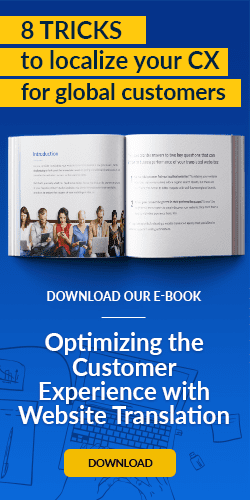Your company needs more than website translation to truly succeed in online global markets. You need a website translation solution that optimises your multilingual sites for the best-possible user experience. This means making sure customers can find your translated sites in their preferred search engine … and stay on your sites once they get there.
Here are five optimisation tips that can help you boost inbound traffic, and on-site engagement, to your multilingual websites.
1. Translate Your Metadata
Ideally, your multilingual websites will contain under-the-hood, SEO-rich content that global search engines use to determine website quality, customer relevance and SERP. But if you don't translate that keyword-friendly content, your multilingual site will have difficulties ranking high in local search engines.
Global customers may struggle to discover your site if you don’t translate its SEO-rich metadata.
To address this challenge, you’ll need:
- Fluency in search engines beyond the Google universe (such as Russia’s Yandex, South Korea’s Naver, China’s Baidu and others).
- Familiarity with the most common search terms used by consumers in your target markets.
- The ability to craft metadata with unique in-language, keyword-rich structures that comply with metadata character and pixel limitations in regional search engines.
- The expertise to measure the effectiveness of your localised SEO content, conduct in-market competitive research, and make tweaks as needed.
Tip: As you consider localising your website for new markets, look for website translation solutions that work with your brand's SEO strategy, and can localize your website's metadata to improve rankings in global search engines.
2. Great Language-Detection Technology
In-language Internet searches aren't the only way global customers can find your brand. If your brand is well-known in North American markets, for instance, global customers may search using English-language keywords, or simply input your English-language website address.
In these cases, your global customers will find themselves at your English website, instead of the localised site you've created for them.
That leads to a bad user experience. Your global customers will likely bounce, since they can't read or transact in English.
Provide customers with ways to easily access your translated site. If they can't do that, they'll likely bounce without engaging.
That's where intelligent language-detection technology comes in. Consider this technology a kind of "welcome mat" for global users. This technology analyses inbound visitors to your English site, and algorithmically determines if they prefer reading a language other than English. The technology then prompts the user to opt into the proper localised website experience. Tip: This on-site feature mitigates bounce rates, increases engagement and delivers a great customer experience from the get-go. Top-flight vendors provide language-detection technology that:
- Seamlessly welcomes first-time visitors in the language they’re most likely to speak.
- Anticipates visitors’ other preferences, including appropriate country of residence and currency.
- Remembers these preferences for return visits.
3. Implement ‘hreflang’
"Hrflang" (or more properly, "rel=alternate hreflang") is a special website management attribute currently recognised by Google and Yandex. When incorporated within a website's code, it ensures that the proper translated version of a website appears in relevant search results.
Implementing ‘hreflang’ tags is a pain, but today’s top vendors can handle its setup and management.
Tip: Implementing "hreflang" tags is a pain, but today's top vendors can handle its setup and management. Look for providers who can:
- Accurately use ‘hreflang’ tags to ensure the proper version of your brand’s global website appears in the search results.
- Present translated pages with the same relevance and rank of your primary-market site.
- Maintain correct site mapping across multiple multilingual websites.
4. Customise Content to Enhance Consumer Experience
Using customised content called localizations can enhance a global customer's experience, and increase their time on your multilingual site. This content often combines locally-preferred phrases, local holidays or unique shopping behaviours with market-specific promotions to improve conversions.
But this cultural fluency can extend to other channels such as regional social networks, and to important parts of a website such as phone numbers for native-speaking local support reps, e-post addresses, etc.
Tip: The best website translation vendors have this cultural fluency and can tweak your multilingual site content accordingly.
Showcase your knowledge of a market's local lingo and customs. This increases engagement on your website-and beyond.
5. Improve On-Site Search Capability
Localised On-Site Search (OSS) technology is another great optimisation that directs customers to what they're looking for more quickly, which reduces bounce rates and boosts conversions.
Tip: Look for localised OSS capabilities that can:
- Make the OSS capability of your multilingual sites as responsive as that of your flagship site.
- Optimise OSS for frequently searched keywords that reflect the interests of local consumers.
Conclusion
As you explore solutions to help your company expand into new global online markets, remember that website translation isn't the only thing to look for. You'll want a solution that also provides optimizations that boost traffic, increase engagement and generate conversions on your global websites.
Remember, it’s not just about your brand being seen or even understood—it’s about becoming a trusted, go-to resource for your global customers.
Last updated on September 20, 2017
